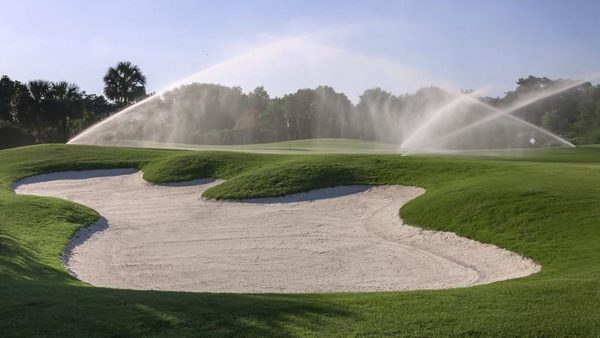Saving Municipal Golf in Detroit
One of the great hidden treasures of golf in our country is the city-owned municipal course.
The National Golf Foundation counts approximately 2,500 government-owned municipal golf courses in the country, many of which belong to our largest municipalities. Among the major cities that operate multiple golf facilities is Detroit, Michigan, which owns four public golf courses that date back as far as the 1920s.

The Donald Ross-designed Rackham Golf Course was established in 1923 and sits next to the Detroit Zoo.
Detroit’s economy has declined in recent years and so too have the city’s municipal golf courses. That unfortunate reality prompted discussion about the potential closure of Detroit’s four city golf facilities. Detroit City leaders openly debated the future of the courses in 2016 and 2017, with outright closure and the re-purposing of all four facilities under consideration. As a last effort to save the golf courses, the city hired NGF consultants to provide a thorough review of the long-term potential of these properties and develop a plan to save municipal golf in Detroit.
NGF’s 2017 Review
What the NGF found in Detroit was a mix of potentially outstanding public golf courses with interesting designs and rich history.

The Palmer Park Golf Course opened in 1927 and has been the home turf for Detroit legends including Marvin Gaye, The Temptations, Four Tops and heavyweight boxing champ Joe Louis.
Rackham GC includes a historic clubhouse and Donald Ross-designed golf course from the 1920s (although it was partially renovated as part of a highway expansion in 1988); a creative riverside golf layout at Rouge Park GC; a family-friendly 5,800-yard layout at Chandler Park GC and the unique golf layout of Palmer Park GC, which used to be active with golf competitions that included many famous Detroit legends from sports and the “Motown” music industry.
Yes, the city of Detroit was in the golf operations business, although city officials didn’t seem to know it.
Over the years, the city courses had fallen into disrepair, with severe deficiencies in critical infrastructure like irrigations systems, drainage and clubhouse facilities. As a result, the courses became less desirable and many patrons began to gravitate toward newer courses in the suburbs.
A key element that the NGF found was contributing to the decline was a flawed system of operation, whereby the city leased the courses to a local golf management firm on a month-to-month basis with no long-term security. As a result, the managers were hesitant to invest in the courses — as would be expected on a short-term contract.
In short, the NGF found that Detroit’s courses weren’t being mismanaged, they were simply being neglected by a city that didn’t value their presence or consider their long-term capital needs. Detroit golfers sent warnings to city leaders, but no action was taken with higher priorities such as police, fire and other basic services taking precedence.

Maintenance equipment at Rouge Park in Detroit.
Still, despite the disrepair, the city’s golf courses retained a small but loyal following and the courses were generating a modest level of revenue, albeit not enough to cover day-to-day expenses and capital investments.
The Plan for Detroit
As part of the NGF’s 2017 review, a plan was presented to the city showing what would have to happen to save its golf courses.
First, the NGF implored the city to make a commitment to golf. It couldn’t be done halfway; the choice for Detroit came down to making a full commitment or giving it up.
Secondly, the NGF recommended a better operating program that either included direct investment by the city, new private investment in exchange for a long-term contract, or both. While the courses needed to be repaired and improved, the urging was that the enhancements be coordinated and prioritized as part of an overall city golf program.
Lastly, the NGF recommended a program of internal segmentation, whereby each Detroit golf course was serving a unique market segment so as to reduce in-house competition. The NGF viewed Rackham as a potential “premier” golf facility that would trade on its history and Donald Ross lineage. Rouge Park was to be positioned as a tournament course, taking advantage of the challenging layout and significant river frontage. Chandler Park would have the least change and be retained as a family-oriented 18-hole golf course measuring less than 6,000 yards in length.

Palmer Park Golf Course would undergo the most significant changes among the Detroit municipal courses.
The greatest change would occur at Palmer Park, which is the most economically-challenged of the four facilities. The NGF recommended this property be transformed into a high quality golf learning center with double-deck driving range, a 9-hole short course and additional golf training/practice elements, all on the existing front nine. The back nine could also be retained as a separate 9-hole golf course. The idea would be to use this facility for all sorts of “grow the game” initiatives and increase the number of golfers in Detroit. The new Palmer Park could become the permanent home of the First Tee in Detroit and even serve as a driving range for the nearby Detroit Golf Club, which doesn’t have a full range of its own.
If properly developed, the Palmer Park facility could become a catalyst to help grow golf in Detroit and, ultimately, help all the other golf courses in the area.
Recent City Actions
After reviewing the NGF report, Detroit has started to implement many aspects of the recommended plan.
The city decided to end its current month-to-month form of operation and recently issued a formal request for a new management contract form of operation. This new structure will allow for the use of public money (either new debt or city reserves) to improve Rackham, Rouge and Chandler, while a new plan is developed for Palmer Park. The city created a new Palmer Park sub-committee to coordinate planning for facility upgrades and begin the fundraising needed to make it a reality.
Perhaps most importantly, Detroit officials have made a promise to operate municipal golf in the city, one that includes a commitment to provide the necessary resources.
In a city that faces as many challenges as Detroit, it may be a long road back for these unique public golf courses, but a significant first step has been taken to help save municipal golf in the Motor City.

Scenes from Detroit’s Rouge Park Golf Course.
Short Game.
"*" indicates required fields
How can we help?
NGF Membership Concierge

"Moe"
Learn From NGF Members
 Ship Sticks Secrets to a Hassle-Free Buddies Golf Trip
Ship Sticks Secrets to a Hassle-Free Buddies Golf Trip
Whether you’re the head planner of your upcoming buddies golf trip or simply along for the ride, we’ve gathered a few easy ways to keep everyone in your group happy.
Read More... Golf Course Turf, Soil and Water Quality Diagnostic Testing
Golf Course Turf, Soil and Water Quality Diagnostic Testing
As humans, we see our primary care physician on a regular basis to proactively evaluate our vital signs. Likewise, a superintendent should perform frequent diagnostic testing on their golf course.
Read More... Unlocking Distance: Launch Conditions and Angle of Attack
Unlocking Distance: Launch Conditions and Angle of Attack
We’ve long known that higher launch and lower spin is a powerful combination for generating consistently long and straight tee shots. A key factor in optimizing launch conditions, one often overlooked, is ...
Read More...


